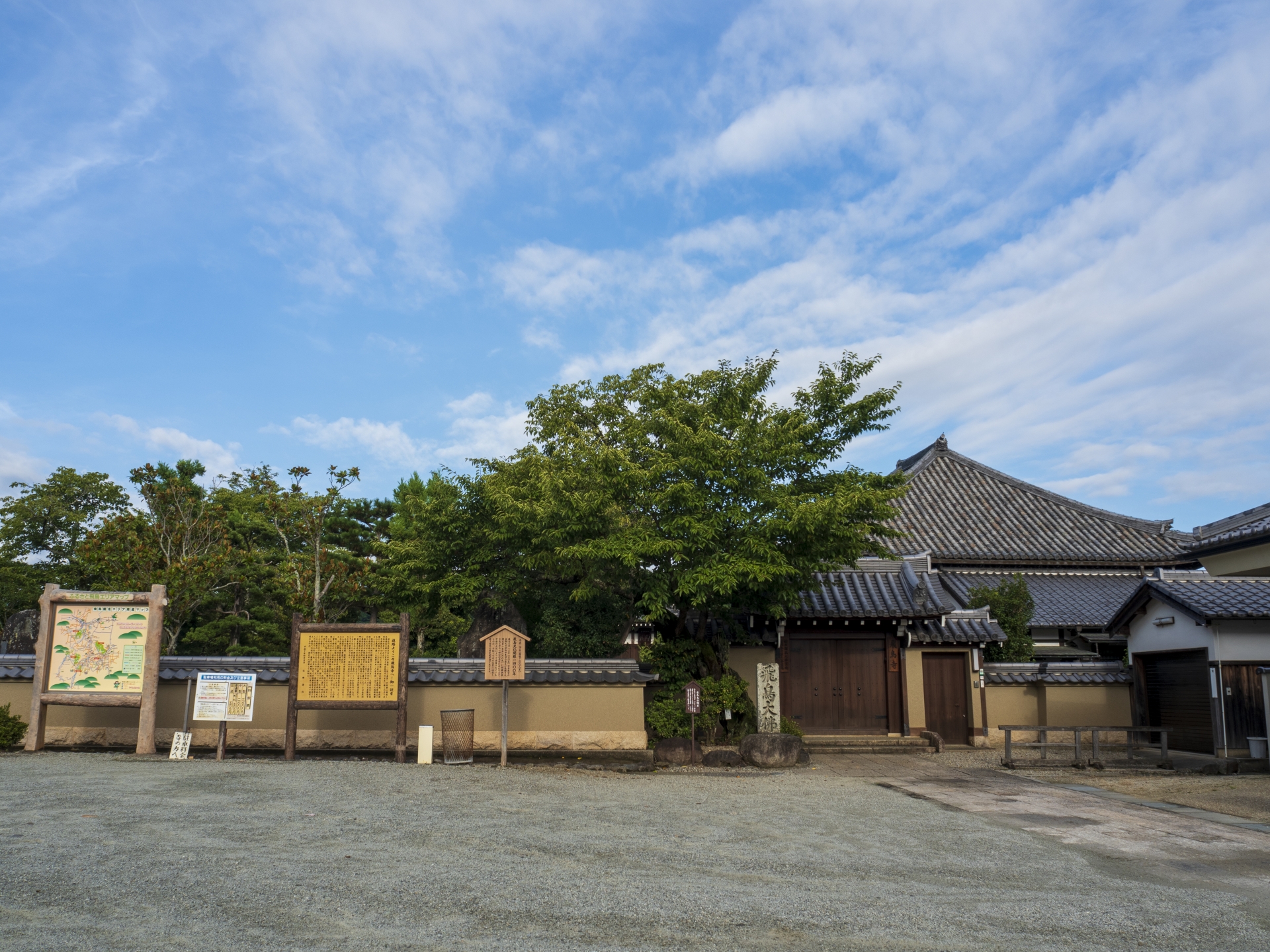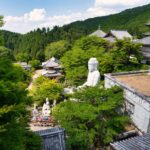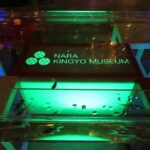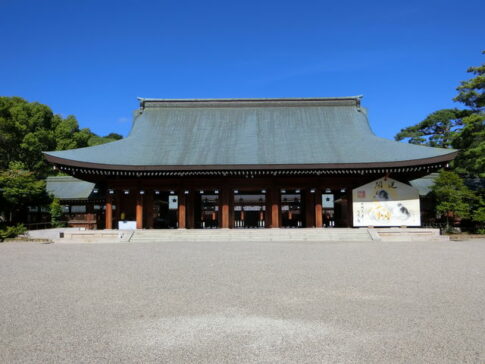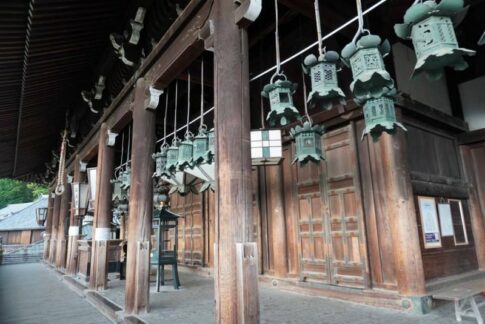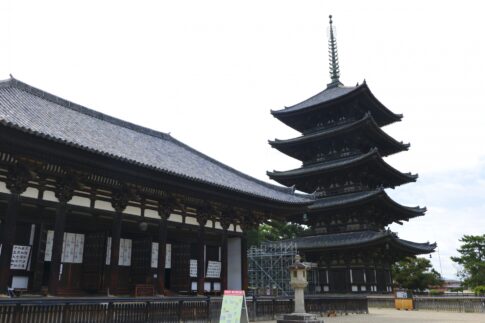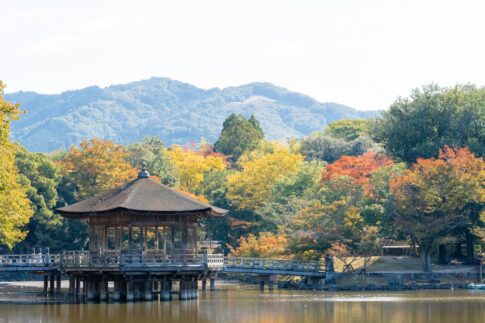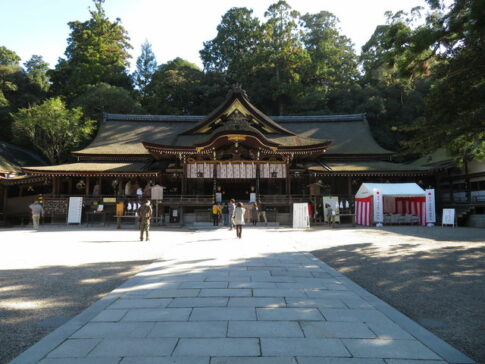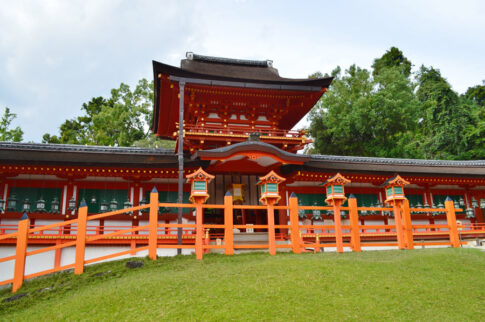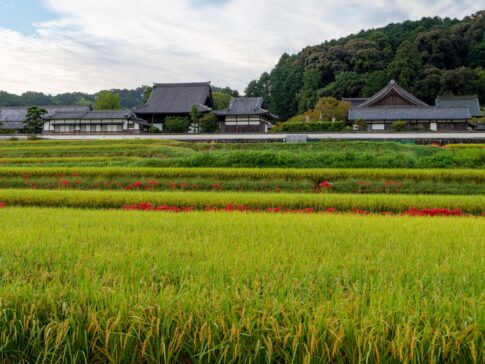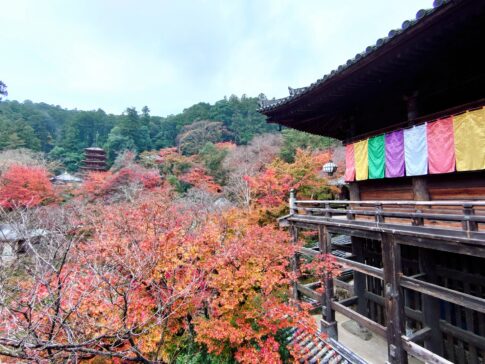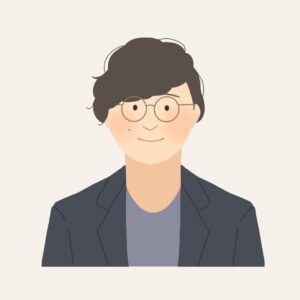Asuka Temple is one of the oldest temple in Japan. It has a long history and rare collection.
It is worth visiting!
What you need to know before visiting Asuka Temple
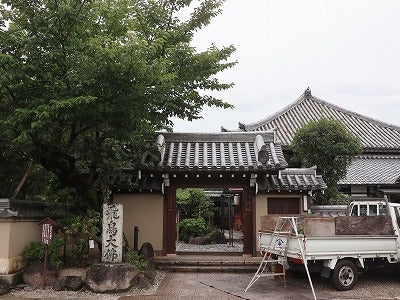
1. History
Asuka Temple was completed in 596 (Suiko 4) as Japan’s first full-scale temple at the behest of Soga Umako, who protected Buddhism.
It is a large temple with three main halls surrounding a pagoda, and is also called Hokoji Temple. After the Heijo-kyo capital was relocated to Nara and a new temple was built in Nara, it was called Hongenko-ji Temple.
Most of the temple buildings were destroyed by fire during the Kamakura period (1185-1333). The present main hall was rebuilt in the Edo period.
The principal image of the temple, a seated bronze statue of Shakyamuni Buddha (Important Cultural Property), was created in the Asuka period (710-794), and is the oldest Buddhist statue in Japan.
It is popularly known as Asuka Daibutsu (Great Buddha of Asuka).
On the west side of the temple, there remains a five-ringed pagoda called the head mound of Soga Iruka. There is a monument to Yamabe Akahito’s poems in the precincts of the temple.
It is said that Buddhism was introduced to Japan in 538 (or 552), but it was not welcomed with open arms from the beginning.
Although a statue of the Sakyamuni Buddha, Buddhist ritual implements, and sutras were sent from Baekje on the Korean peninsula, they were destroyed because of the many opposing forces.
Eventually, a war broke out between the pro-Buddhist Soga clan and the anti-Buddhist Mononobe clan, and the Soga clan won the war in an armed conflict.
The head of the Soga clan at that time, Soga Umako, supported Emperor Soshun, and finally led to the construction of the first Buddhist temple in Japan.
It took 20 years to complete the temple there after receiving a building lot from Asuka Koromo Jyuha, a visitor from Baekje. However, even if a box called a temple was built, it would be meaningless without the monks who were to serve as the essential contents.
Therefore, a number of monks, temple builders, and specialized technicians such as a roban doctor, a tile doctor, and a painter were dispatched from Baekje.
Construction of the temple began in 588, and was completed in 606 when the Great Buddha was enshrined in the Golden Hall.
Relocated with the transfer of the capital to Heijo-kyo
Asukadera Temple, which had prospered for about 100 years, reached a turning point with the beginning of the Nara Period. In fact, when the capital was established at Heijo-kyo, there was not enough to replace Asukadera Temple.
This is because Asukadera Temple had the prestige of national protection and was revered as the Mecca of teachings since the introduction of Buddhism.
A temple with such a strong presence could not be left in Asuka. Therefore, an attempt was made to move the temple to Heijo-kyo eight years after the transfer of the capital.
The temple was newly renamed as Genkoji Temple, with the appropriate meaning as the place where Buddhism began, “the place where Buddhism was originally founded and the first place for the establishment of the Sacred Religion,” and it was to have a large complex comparable to those of Todaiji and Kofukuji Temples.
The Nara period (710-794) was a time when Buddhist culture flourished further with the construction of Kokubunji temples throughout the country.
Ganko-ji also became a state-run temple and was one of the seven great temples of the southern capital along with Todai-ji, Kofuku-ji, Daian-ji, Yakushi-ji, Saidai-ji, and Horyu-ji, and became a very influential temple.
In 752, at the Todaiji Daibutsu opening ceremony, Ryuzon, a monk of Gangoji Temple, recited the Kegon-kyo Sutra to celebrate the opening of the Daibutsu, indicating that the temple played a central role in the development of Buddhism in Heijo-kyo Capital.
Decline and Desolation of Gango-ji Temple
As time went on and the Heian period progressed, the power of the Imperial Court began to wane with the collapse of the Ritsuryo (law and order) system.
Losing the protection of the Imperial Court, the temple continued to decline, and by the late Heian period, the temple found it difficult to generate income from the manors and domains it used to run its temple. The temple was so strapped that it was forced to sell off its treasures to maintain the temple.
Eventually, the gate and bell tower collapsed, leaving the temple in a state of eye-watering disrepair.
The temple was no more than a ruin. Even so, the temple did not cease to maintain its Buddhist lanterns, for the temple is rooted in the Pure Land faith.
This was because of the support of the people, who were rooted in the Pure Land faith.
In a small room of the monks’ quarters where he used to live, the mandala was enshrined as the principal image and called “Gokuraku-bo,” which attracted the attention of those who wished for a rebirth in paradise.
This is said to be the origin of the current national treasure “Gokuraku-do”.
In the medieval period, Jizo worship also flourished, and popular beliefs increasingly supported Ganko-ji Temple. However, during the Muromachi period (1336-1573), the Kondo was destroyed by fire in a revolt, and from the Warring States period to the early Edo period (1603-1868), houses were built on the temple grounds, and the temple was no more to be seen.
Although the temple had received some protection from the Tokugawa Shogunate, it was overshadowed by the movement to abolish Buddhism in the early Meiji period (1868-1912). After the war, the temple was finally rebuilt and registered as one of the UNESCO World Heritage Sites “Ancient Monuments of Nara” in 1998.
2. Highlights of Asuka Temple
- Main Image of the Great Buddha of Asuka (Shakyamuni Buddha)
It is said to be the oldest existing Buddhist statue of known age in Japan. It is said in the Nihon Shoki (Chronicles of Japan) to have been made by the Buddhist priest Kurazukuri no Tori, and stands approximately 4.8 meters high.
Kurazukuri was a famous Buddhist priest active in the Asuka period (710-794), and was a member of a migrant family that came from China or the Korean peninsula to make metal products. When they tried to put the completed Great Buddha into the Golden Hall of Asukadera Temple, they could not get in by any means because the Buddha was larger than the door.
There was a plan to forcefully break the door and put the statue inside, but thanks to Kurazakudori’s ingenuity, the door was not broken at all and the statue could be put inside. As a reward, he was given rice paddies in Sakata-gun, Omi Province.
The Asuka Daibutsu has been exposed to the elements for a long time after its hall was destroyed by fire, so the only parts that are believed to be from the original casting are the lower part of the head from the forehead and nose up, and the second to fourth fingers of the right hand, while the other parts are believed to have been recast in later periods.
- Asuka Museum
Once you enter the Asuka Museum, you are already in Asuka World!
Monkey stones and turtle stones line the garden, and the tombs in Asuka Village are relocated and exhibited.
The stone chamber of the Takamatsuzuka burial mound is also on display.
There is also a permanent exhibit of artifacts and models excavated from Asukadera Temple.
Special exhibitions are held periodically to present the results of the latest excavation research and to display excavated artifacts that are not usually open to the public.
- The components from the Asuka Period
Thousands of roof tiles on the west side of the Gokurakudo and the east side of the south side of the Zen room remain as they were when the temple was built, in the Asuka Period.
The tiles are reddish or blackish because of the low firing temperature of the kilns used to bake the tiles at that time, and they look just like a mosaic pattern.
Inside the Gokurakudo, there is a section separated by square pillars, and the cell where the monk Chikō lived at the end of the Nara period (710-794) is said to have been left intact.
In the attic of the Zen room, which is usually closed to the public, materials from various periods are used.
The oldest component used in the east room, called yokoki no tougane, probably dates from the Asuka period.
It is not usually open to the public. The temple is not usually open to the public, but is open to the public on special occasions depending on the season and time of year, so be sure to check the website of Gankoji Temple.
The temple has been rebuilt and repaired many times due to the devastation of the temple buildings and fires, so it is unique in that it has many components dating from the Asuka period to the Muromachi period.
- A large number of stone pagodas and Jizo statues [Futa-den].
Within the precincts of Gankoji Temple, there is a section called Ukizuden, where as many as 2,500 stone pagodas and Jizo statues are lined up in a row.
These were rearranged in 1988 and were apparently scattered when the temple fell into disrepair in the past.
The temple, which had prospered during the Nara period (710-794), came under the influence of Kofukuji Temple in the Middle Ages and became a family temple for the monks of Kofukuji Temple.
Therefore, there are many stone pagodas made by temple monks. However, some of them were built by ordinary people who were not monks, and it is likely that they built the pagodas themselves, wishing for the rebirth in paradise before their deaths.
This also reveals that Gankoji Temple was a temple that attracted the faith of the people regardless of their status.
- A cultural asset designated as a National Treasure [Gokurakudo].
This is the main hall of Gonko-ji Temple.
Three rooms of the monks’ quarters were converted into a four-sided, six-room hall with a hongawara roof, and the inner sanctuary was built in the Kamakura period.
It is an imposing structure built in the Kamakura period (1185-1333) with the center of one of the monk’s rooms (Gokurakubo) as the inner sanctuary and the east gable as the front facade.
It was also called Mandara-do (mandala hall) because it was used as a Zen room for the Nara-period monk Chimitsu, and because a mandala of the Pure Land that Chimitsu had painted was enshrined here to help those who listened to his 100-day Buddhist prayer to be reborn in paradise.
- Zen Room, a cultural asset designated as a National Treasure
The Zen room is a simple yet dignified structure with a gabled roof and four rooms and four sides.
It is the remains of the monks’ quarters of Kantai-ji Temple, where monks slept, woke, and studied, and the atmosphere of the past can be clearly seen.
As for the architectural style, it shows the Daibutsusama of the Kamakura period, but many old materials from before the Nara period have been reused for the structural materials.
It was also called Kasuga Kagekodo during the Middle Ages, and was used as a guest house during the Edo period and as a school building after the Meiji period.
- A cultural asset designated as a national treasure [five-story small pagoda].
It is like a miniature version of a five-story pagoda, only 5.5 meters high.
The pagoda is a miniature version of a five-story pagoda, only 5.5 meters high.
However, it is surprising that it is designated as a National Treasure because of its faithful construction, even down to the interior structure, which is not a craftwork but rather a building.
It is said that the pagoda was once housed in the western small pagoda hall of Gango-ji Temple, and is prominent as the only five-story pagoda from the Nara period still in existence.
It is an authentic architectural structure in every detail, and some say it is probably 1/10th the scale of the Kokubunji pagoda. Until the modern era, the floor of the Gokurakudo was dropped to house it.
Summary
As mentioned above, there are so many interesting spots there.
If you are interested in Japanese temple or Buddha image, this place must be enjoyable!
